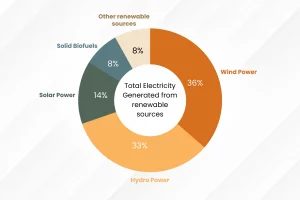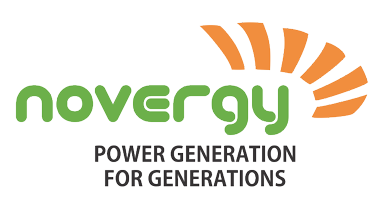Albania, Bhutan, Nepal, Paraguay, Iceland, Ethiopia, and the Democratic Republic of the Congo are some countries that have already achieved 100% renewable energy.
Introduction
As the world is advancing, many countries are trying to achieve 100% renewable energy to combat climate change, reduce dependency on fossil fuels, and build a sustainable, resilient energy future for generations to come.
Albania, Bhutan, Nepal, Paraguay, Iceland, Ethiopia, and the Democratic Republic of the Congo are some countries that have already achieved 100% renewable energy, and countries like Costa Rica, Norway, and New Zealand are also leaders in the transition to renewable energy.
In this Blog, we will discuss what Re100 is, its advantages and disadvantages, and whether it matters to convert your country to a 100% renewable energy source user.
What Is RE 100?
RE100 is the global corporate renewable energy initiative that brings together hundreds of large and ambitious businesses committed to 100% renewable electricity. The vision of this project is to get the most influential businesses to be dependent on 100% renewable energy.
As per the new guidelines, Companies now have to permanently redeem/ cancel Energy Attribute Certificates (EACs), also known as RECs, if they want to make claims about using renewable energy.
How 100 % Renewable Energy Works
1. Energy Sources
Renewable energy is produced from solar, wind, biomass (including biogas), geothermal, or hydropower. You can buy renewable electricity straight from the companies that produce it or from electricity suppliers.
One common method is through a Power Purchase Agreement (PPA), a long-term contract where a buyer agrees to purchase renewable electricity at a fixed rate from a specific generator.
2. Grid Integration & Storage
To use 100% renewable energy reliably, we need smart grid systems and storage. Since solar and wind don’t always produce power when needed, energy storage, like batteries or pumped hydro, can save extra power for later.
Grid integration means connecting different areas and using smart tech to balance supply and demand. This helps keep electricity flowing steadily, even when the sun isn’t shining or the wind isn’t blowing.
3. Policy & Tech Enablers
Policies and technology play a big role in making 100% renewable energy possible. Governments can support the shift with strong laws, incentives, and clear goals for clean energy.
At the same time, new technologies, like smart grids, energy storage, and better solar panels or wind turbines, make it easier and cheaper to use renewable power. Together, the right policies and tech solutions speed up the move to a cleaner, more reliable energy system.
Benefits of Going 100 % Green
1. Climate and Emission Reductions
As there will be a reduction in the use of fossil fuel-powered plants, clean alternatives replace biomass and natural gas in our homes, and renewably powered electric vehicles replace traditional vehicles.
2. Public Health
The reduction of fossil fuels will help the climate to become clearer, which will directly impact people’s health, as the air quality will increase their will be reduction in air-related diseases like asthma and lung cancer.
Challenges & Drawbacks
100% renewable energy is a great project, but there are still some challenges that businesses have to face while implementing it.
- Technical Challenges: To create a source of renewable energy, we need more space, which generally leads to a stoppage in the grid building. Even after the installation of the grid, problems of storage arise for the extra energy.
- Economic Challenges: Even though the cost of using renewable energy is not high but in comparison, the cost of installation, maintenance, and storage is very high for any normal user.
- Environmental and social: The usage of land is very high for installation, which affects the environment and the people or animals who live in those areas.

Future Outlook
As technology advances, the chances of the world using 100% renewable energy will increase with projects like NREL. NREL is a project by the government of the United States to convert the country to 100% renewable energy by 2035.
The future of 100% renewable energy looks promising as more countries, companies, and communities commit to clean power. Advancements in technology, like better batteries and smart grids, are making renewable energy more reliable and affordable.
Experts believe that with the right investments and strong government support, the world can reach major clean energy goals by 2035 or 2050. As awareness grows and solutions improve, transitioning to a fully renewable future is not just possible, it’s becoming more practical and urgent than ever.
Conclusion
100% renewable energy is no longer a distant dream; it’s a growing global movement backed by technologies, policy support, and corporate initiatives like RE100. While there are challenges related to cost, storage, and infrastructure, the long-term benefits for the environment, public health, and energy security far outweigh the problems.
As more countries and companies commit to cleaner solutions, the world is moving closer to a sustainable future. Now is the time for individuals, businesses, and governments to take bold action and be part of the shift toward a 100% green energy world.
To know more about 100% Renewable Energy, you can contact Novergy Solar, which is one of the best solar companies in India.
FAQs
1. What is the 100 renewable energy system?
RE100 is the global corporate renewable energy initiative that brings together hundreds of large and ambitious businesses committed to 100% renewable electricity.
2. Which country has 100 renewable energy?
Albania, Bhutan, Nepal, Paraguay, Iceland, Ethiopia, and the Democratic Republic of the Congo are some countries that have already achieved 100% renewable energy.

